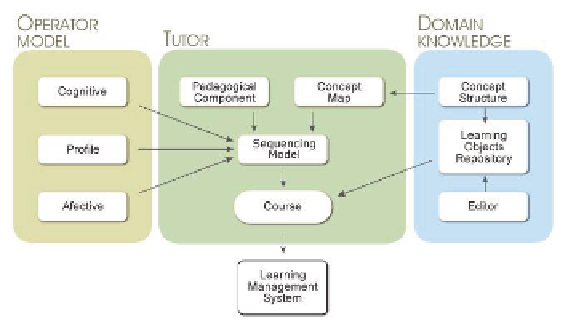Information Technology Reference
In-Depth Information
This paper describes the architecture and development of an intelligent environ-
ment (IE) for training of power systems operators. The IE takes elements of artificial
intelligence such as student modeling, intelligent tutors, intelligent sequence, concept
maps and reusable Learning Objects (LO) to build a tool that allows meeting the re-
quirements for learning and training of power system operators. In contrast with a
traditional training system, the main goal of the intelligent environment is to certify
operators in knowledge, skills, expertise, abilities and attitudes for operation of power
systems.
2 Architecture of the Intelligent Learning System SI-Aprende
The architecture of the IE is based on the generation of dynamic courses generating
systems proposed by Brusilovsky [2]. The IE is composed of four main components
(see Figure 1): the domain knowledge module, the tutor, the operator model, and the
learning management system (LMS).
The first module contains the knowledge of the domain as LOs and concept
structure maps. The tutor module is the component that generates the intelligent
sequence of learning objects to be presented to the operator as a course. Taking as a
basis the concept map, the pedagogical component and the operator model, the
sequencing model generates a specific course for each operator. The operator model is
used to adapt the IE to each specific operator and this model is divided in three
subcomponents: cognitive component, operator profile and affective component.
Finally, the LMS controls the interactions with the operator, including the dialogue
and the screen layout.
Fig. 1.
Architecture of the intelligent environment (adapted of [3]).
This paper describes in detail one of the components of the IE, the Tutor Model.
Detail description of the Operator Model, Domain Knowledge Model and LMS are
already described in a previous work [4].

Search WWH ::

Custom Search